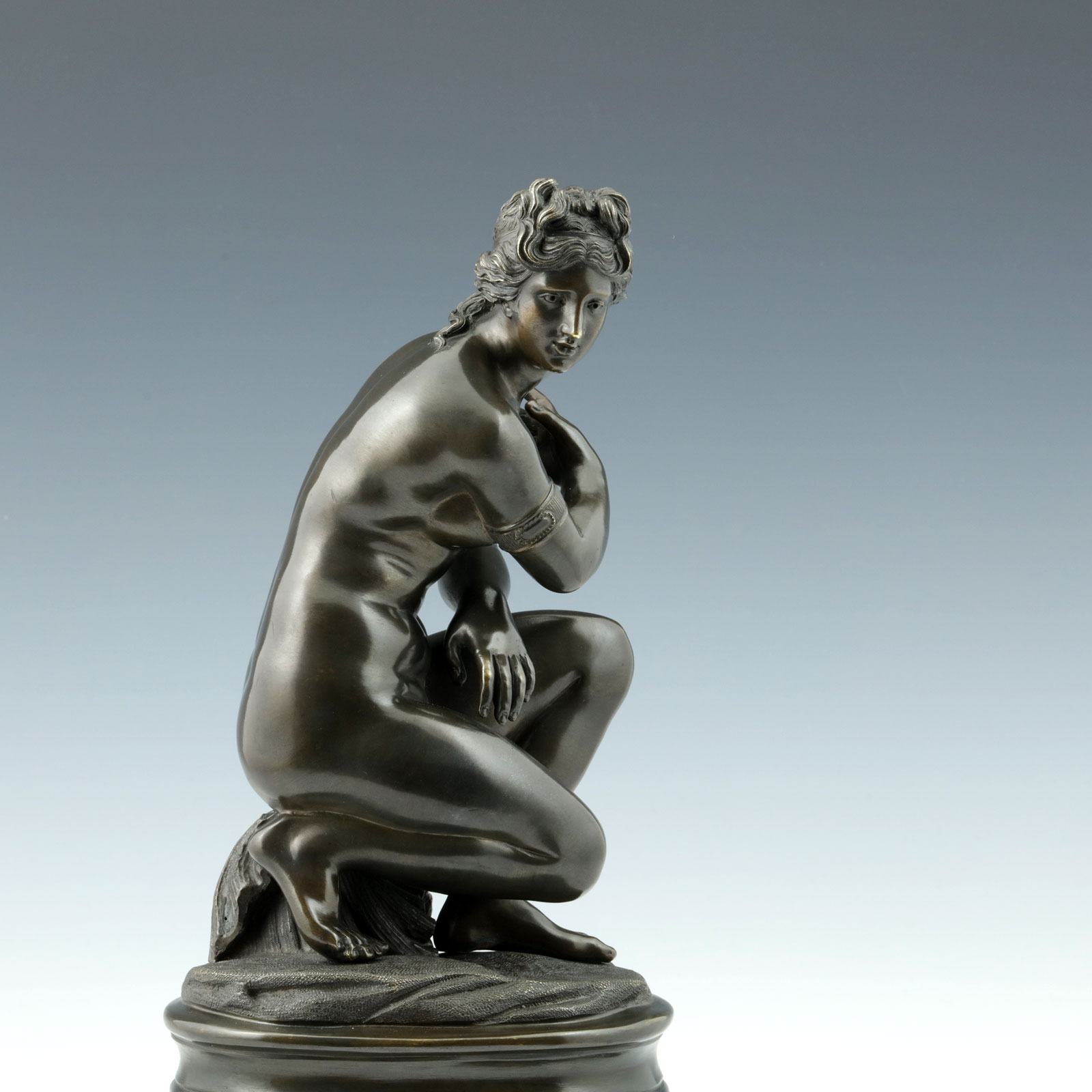
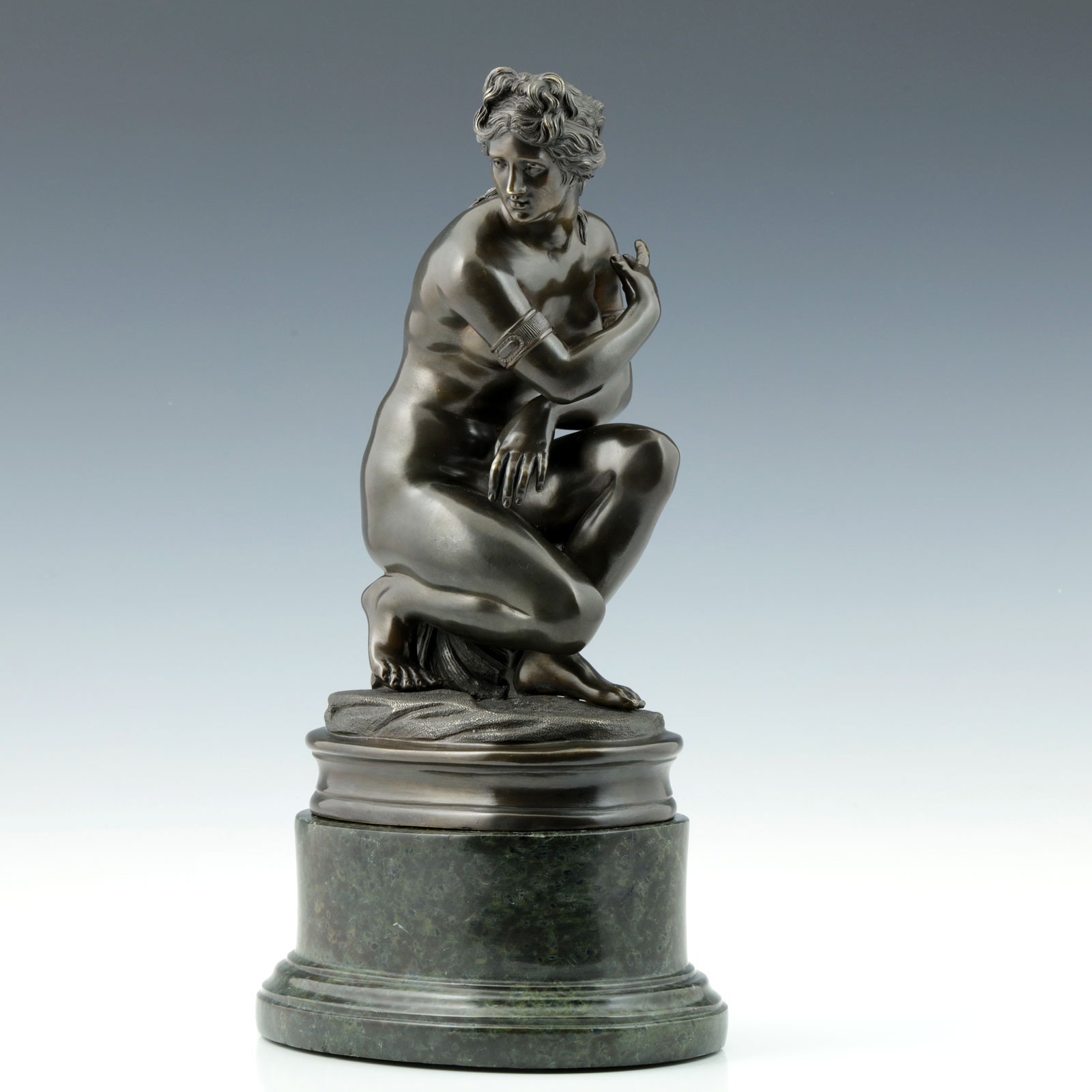
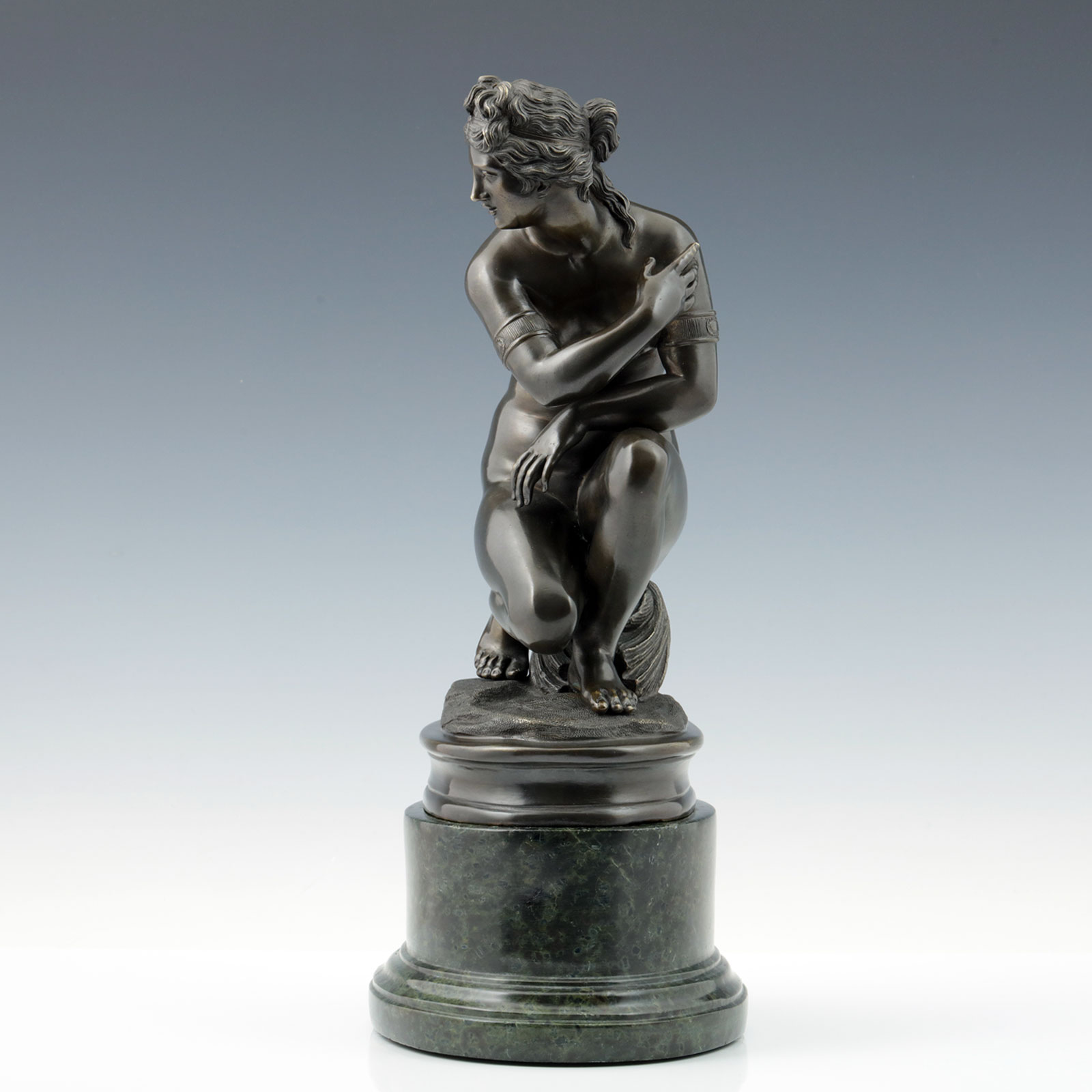
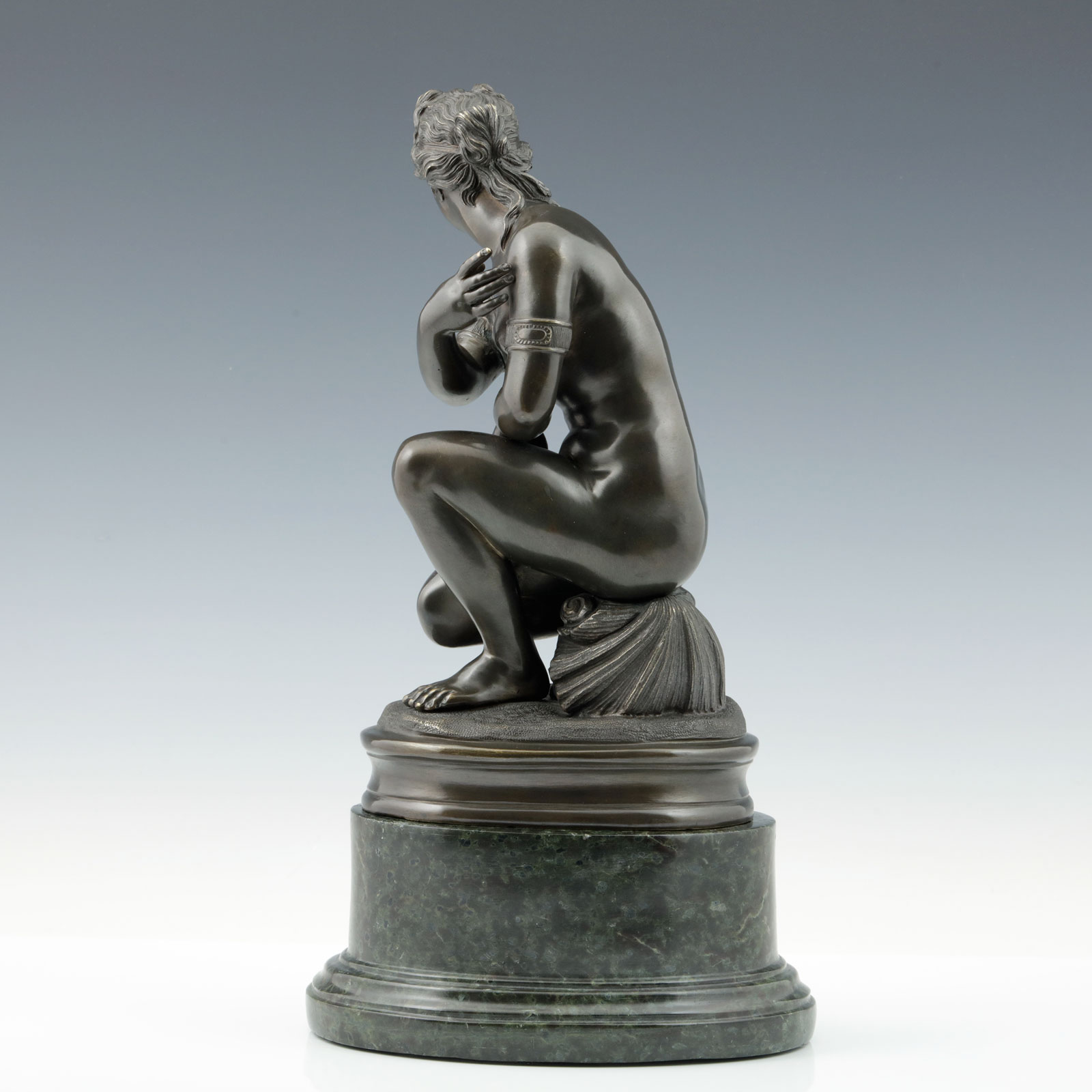
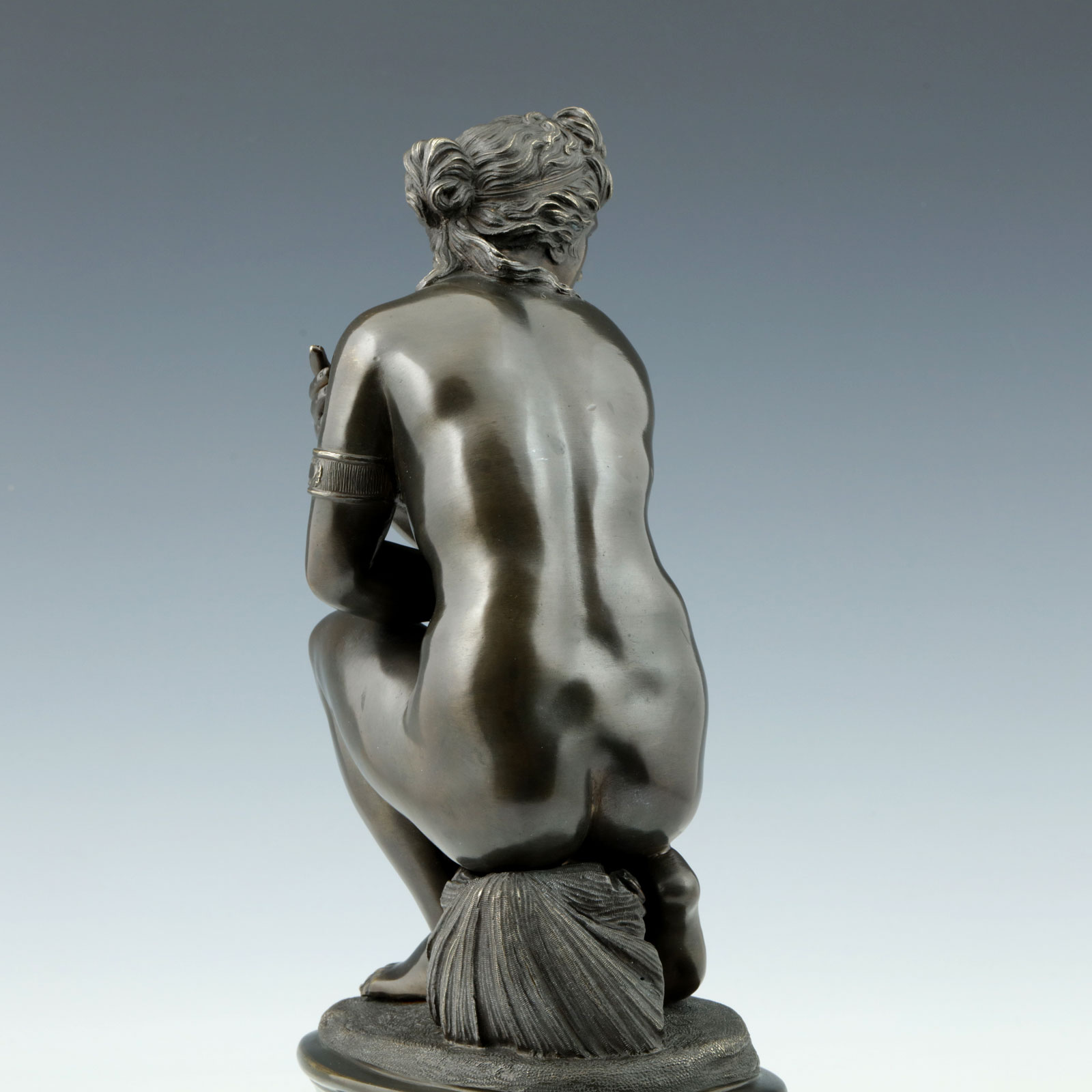
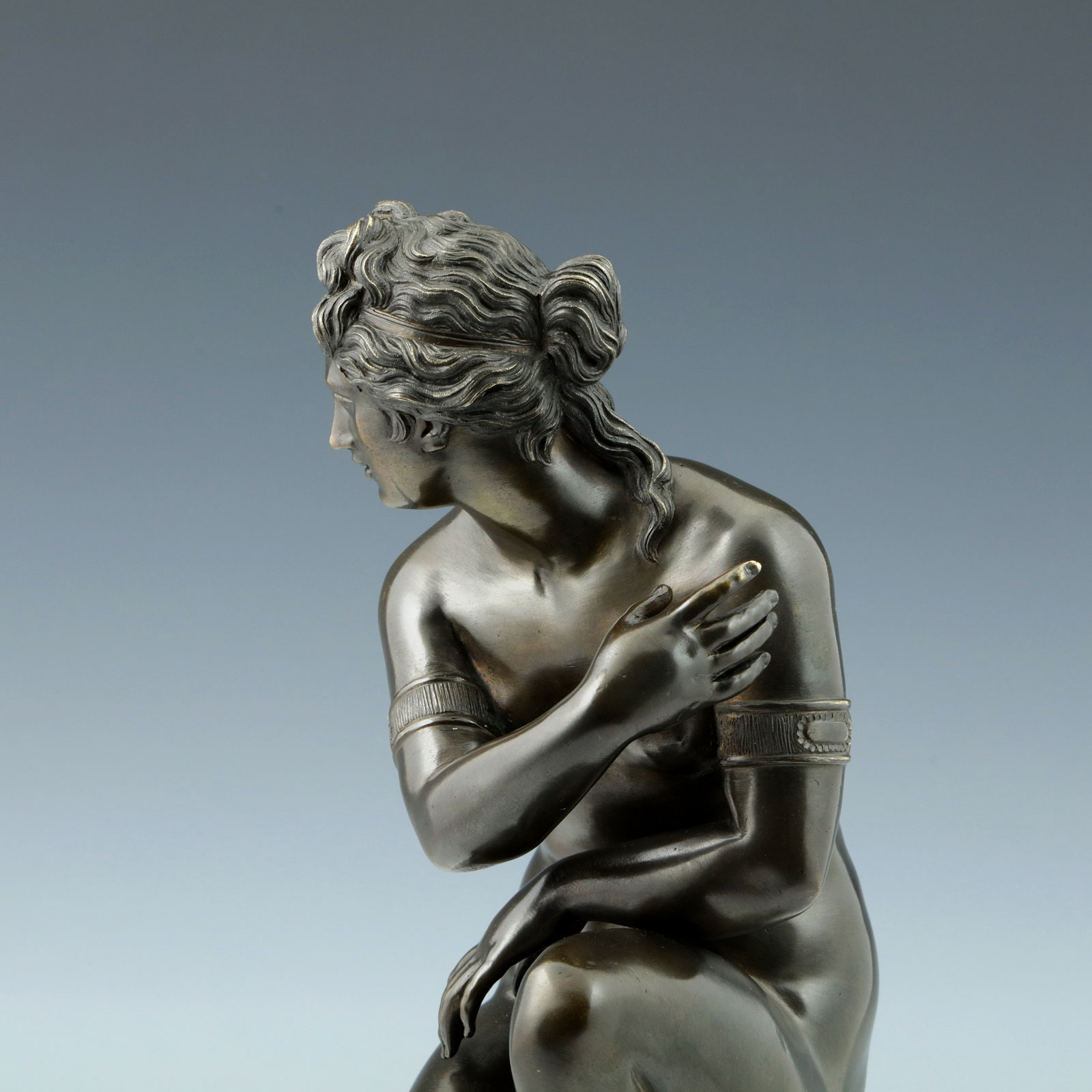
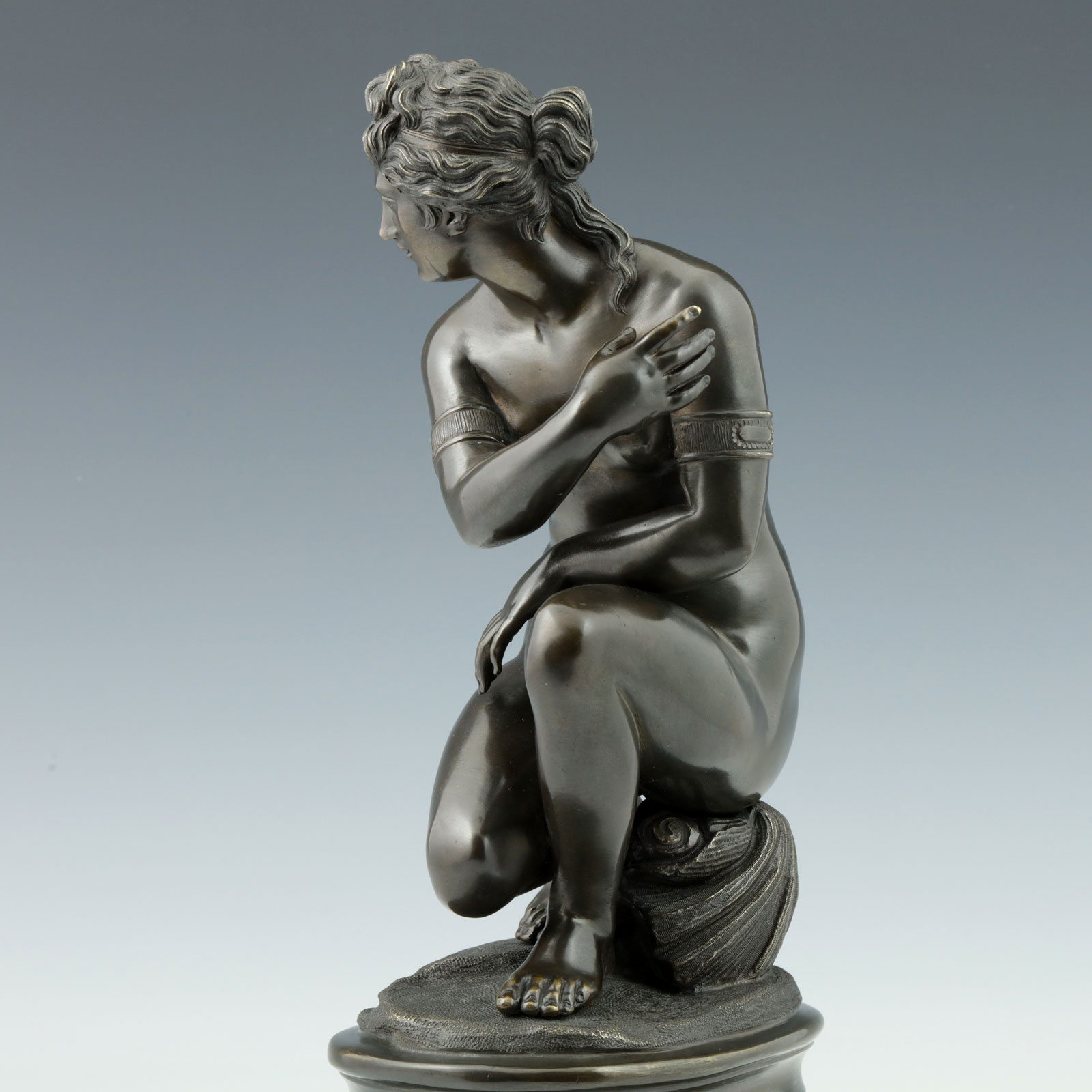
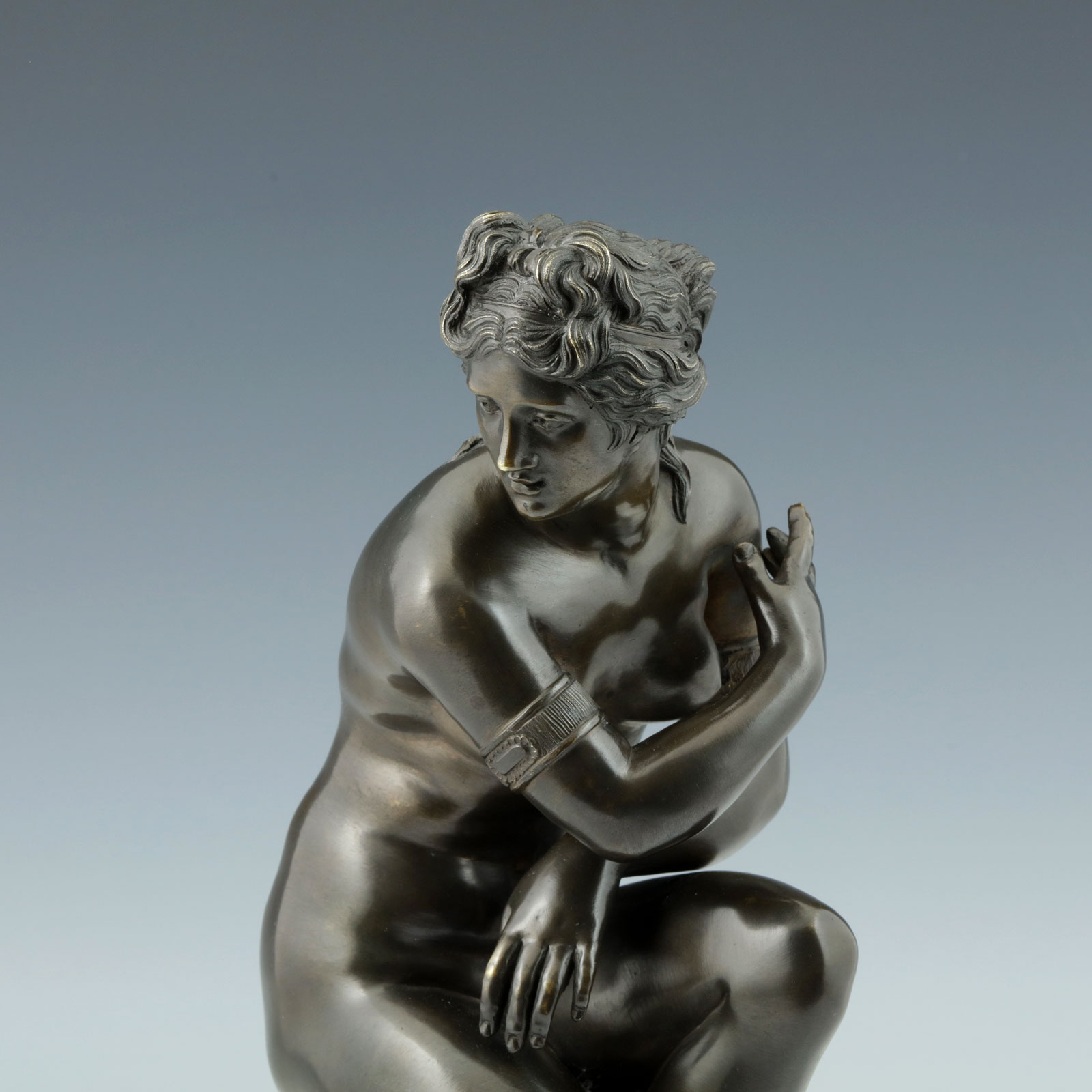
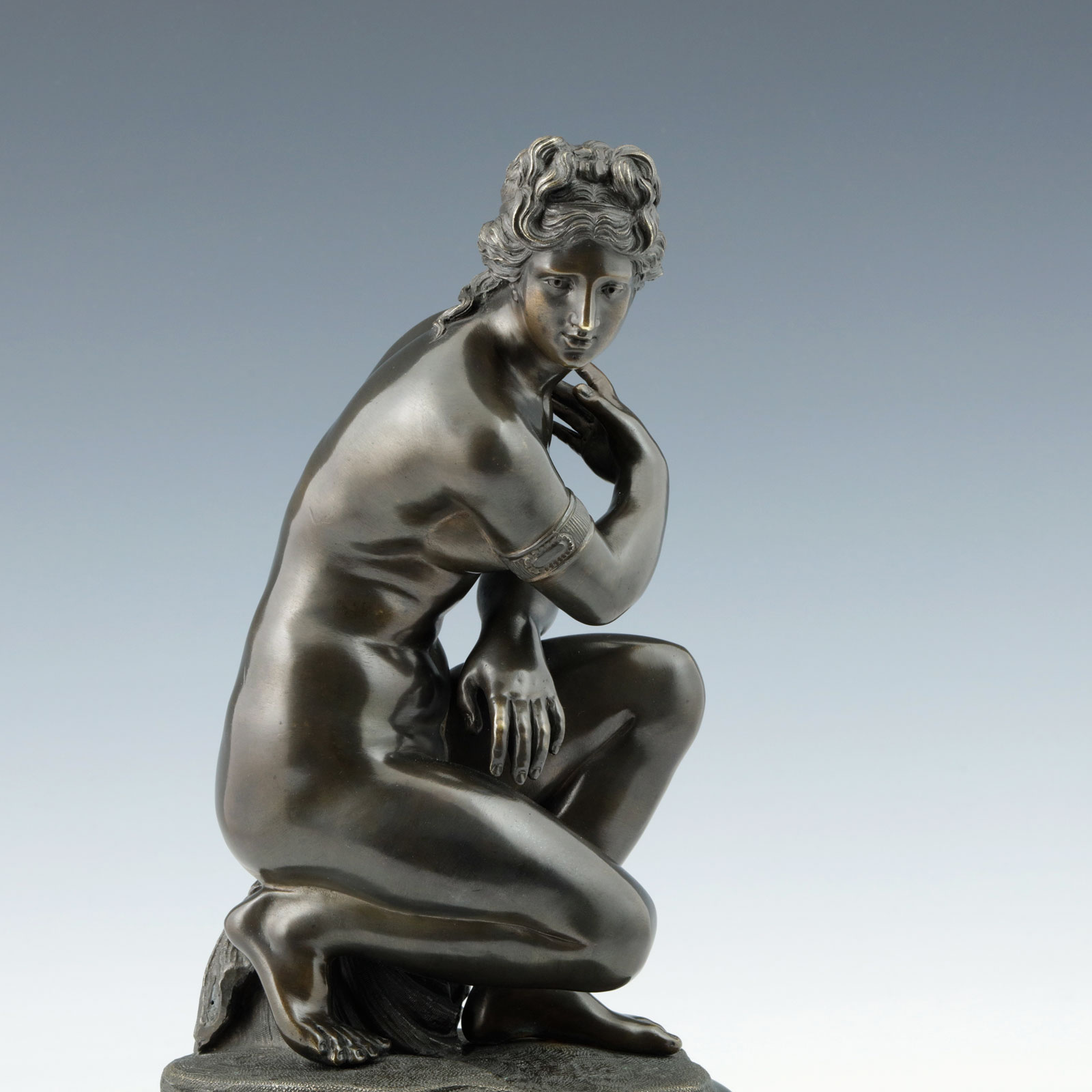
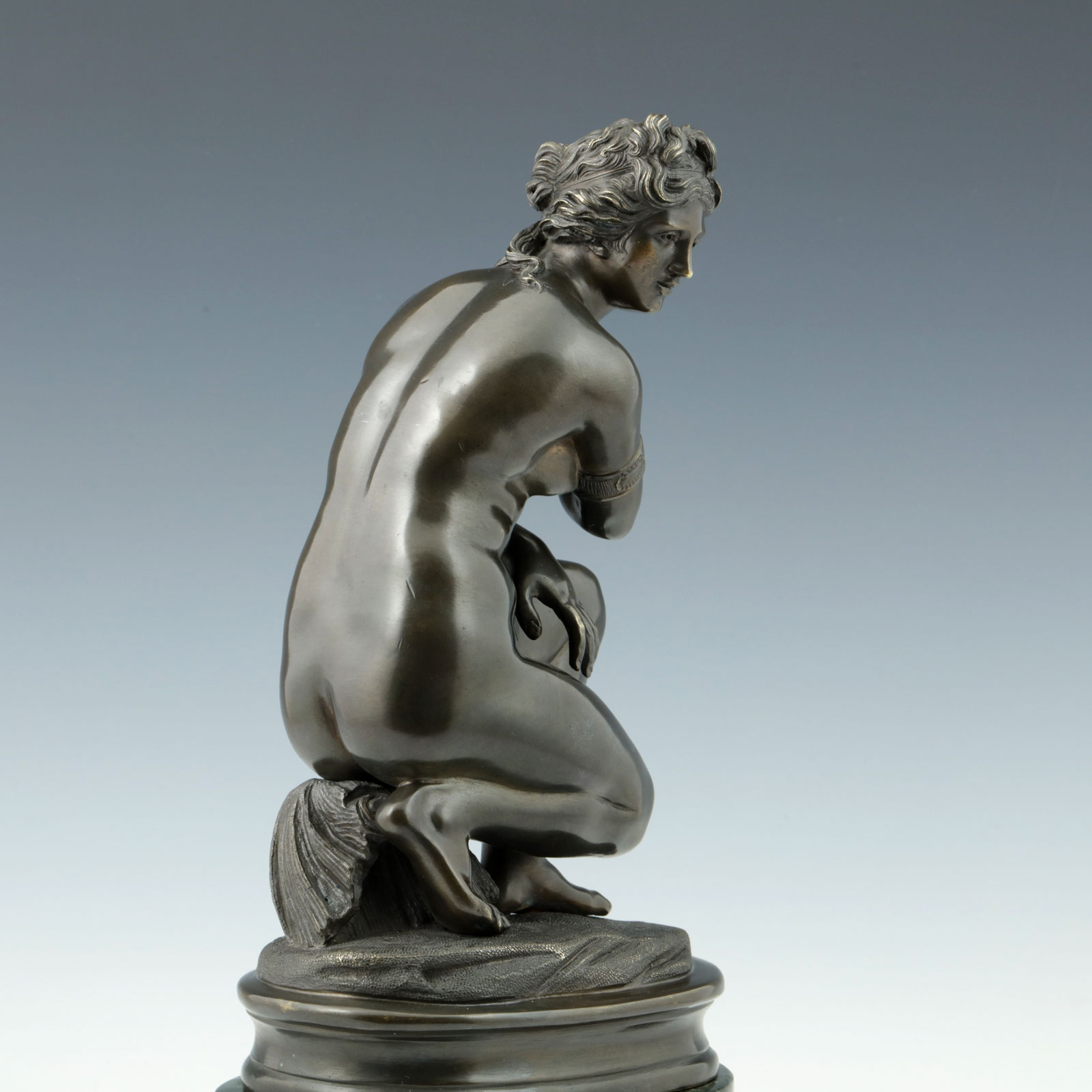
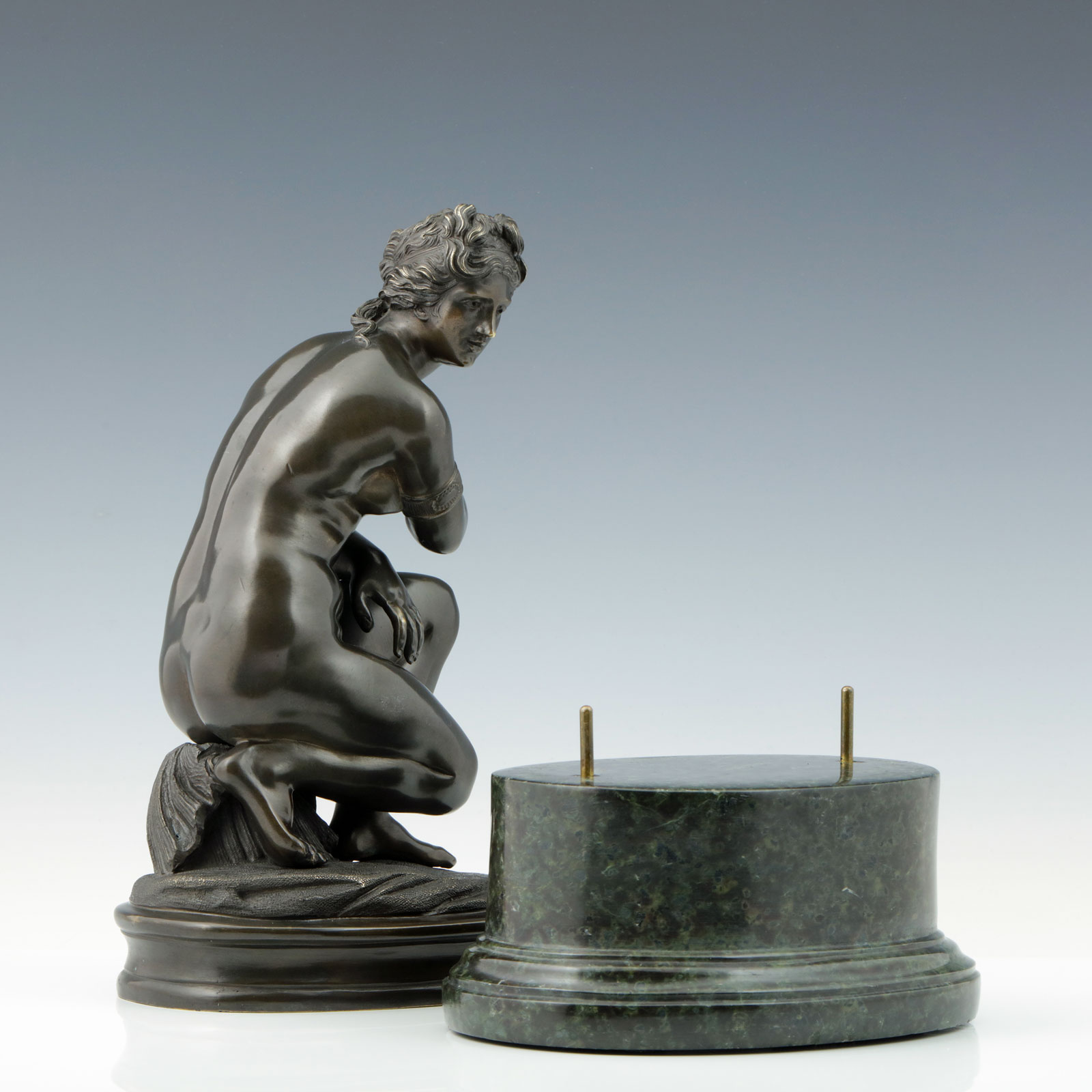
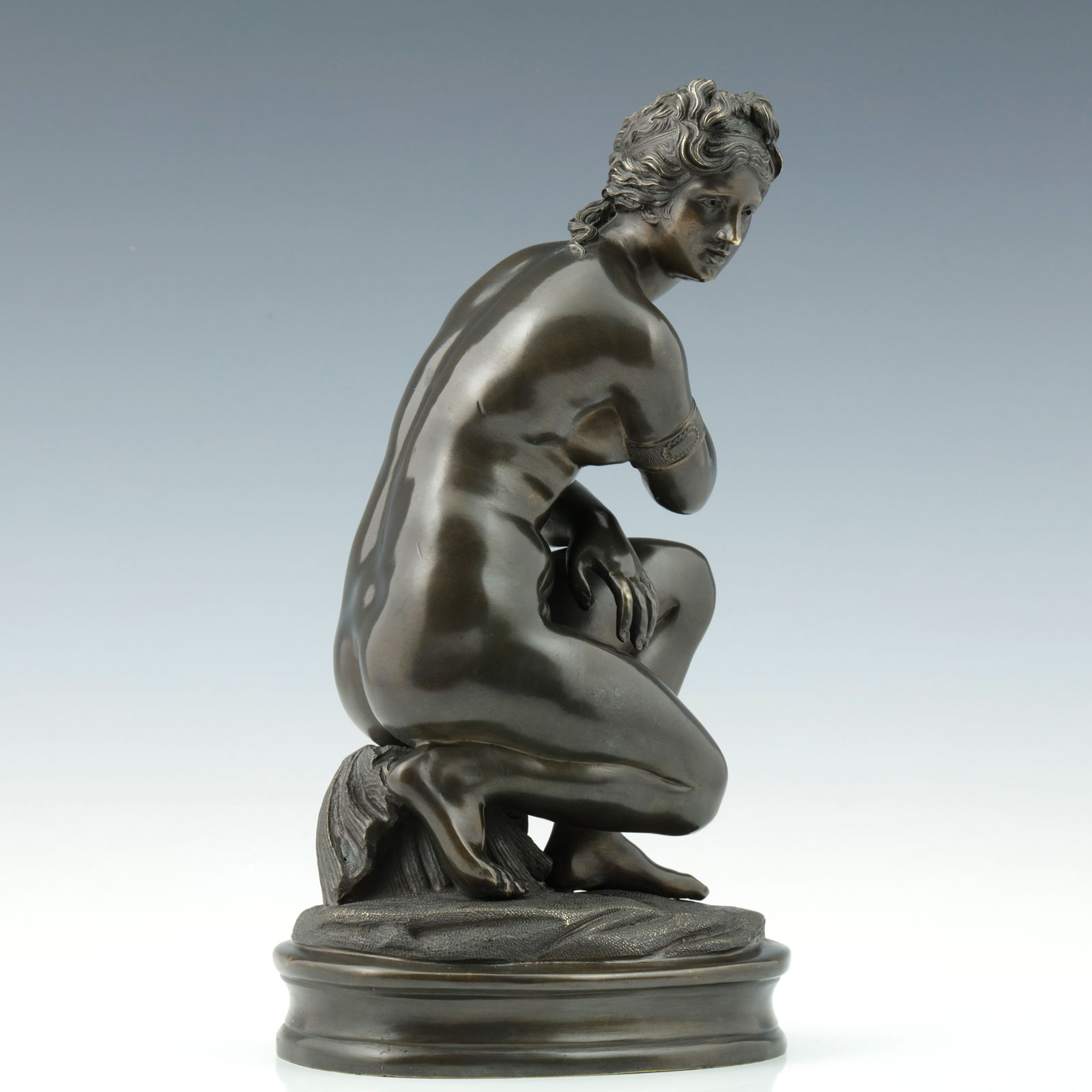
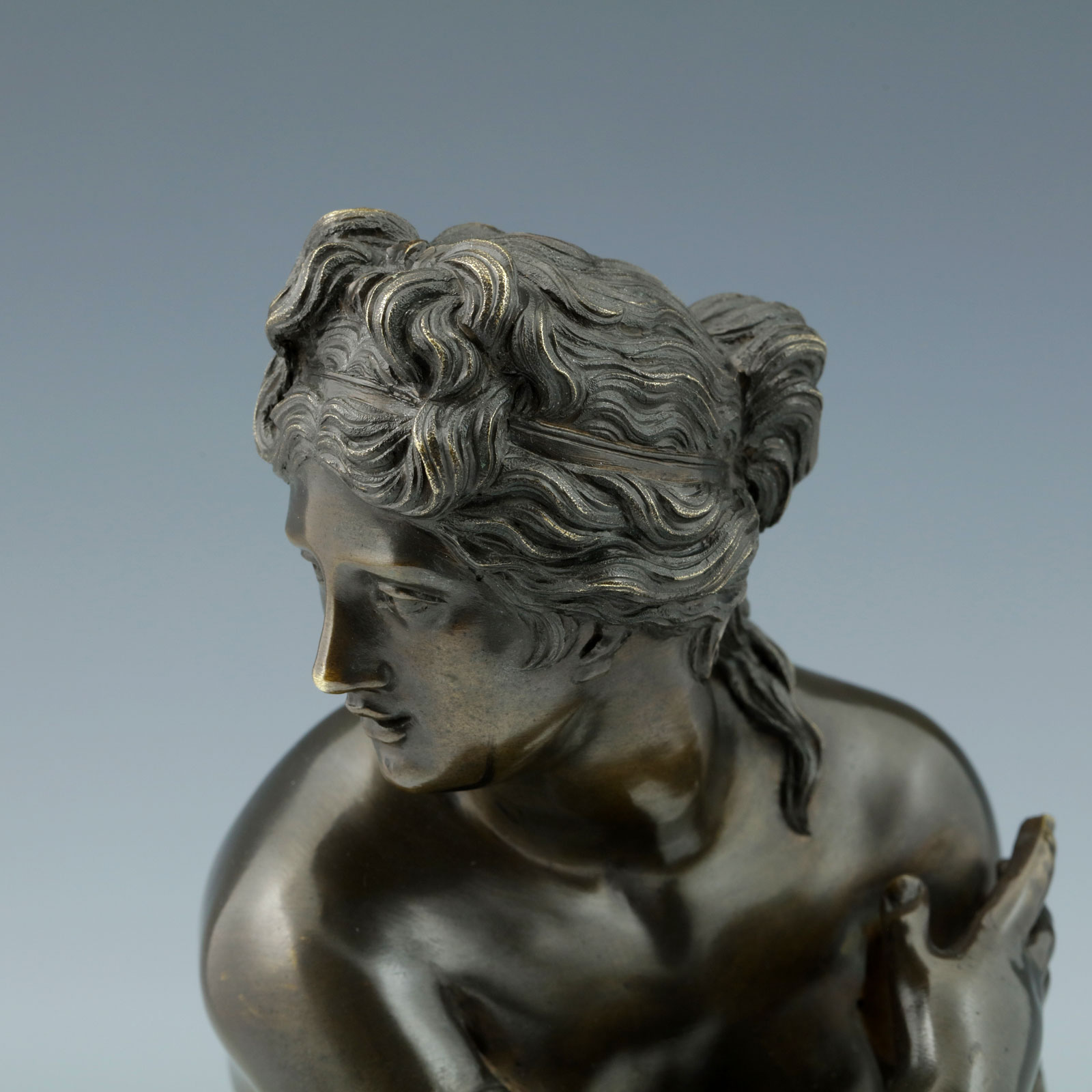
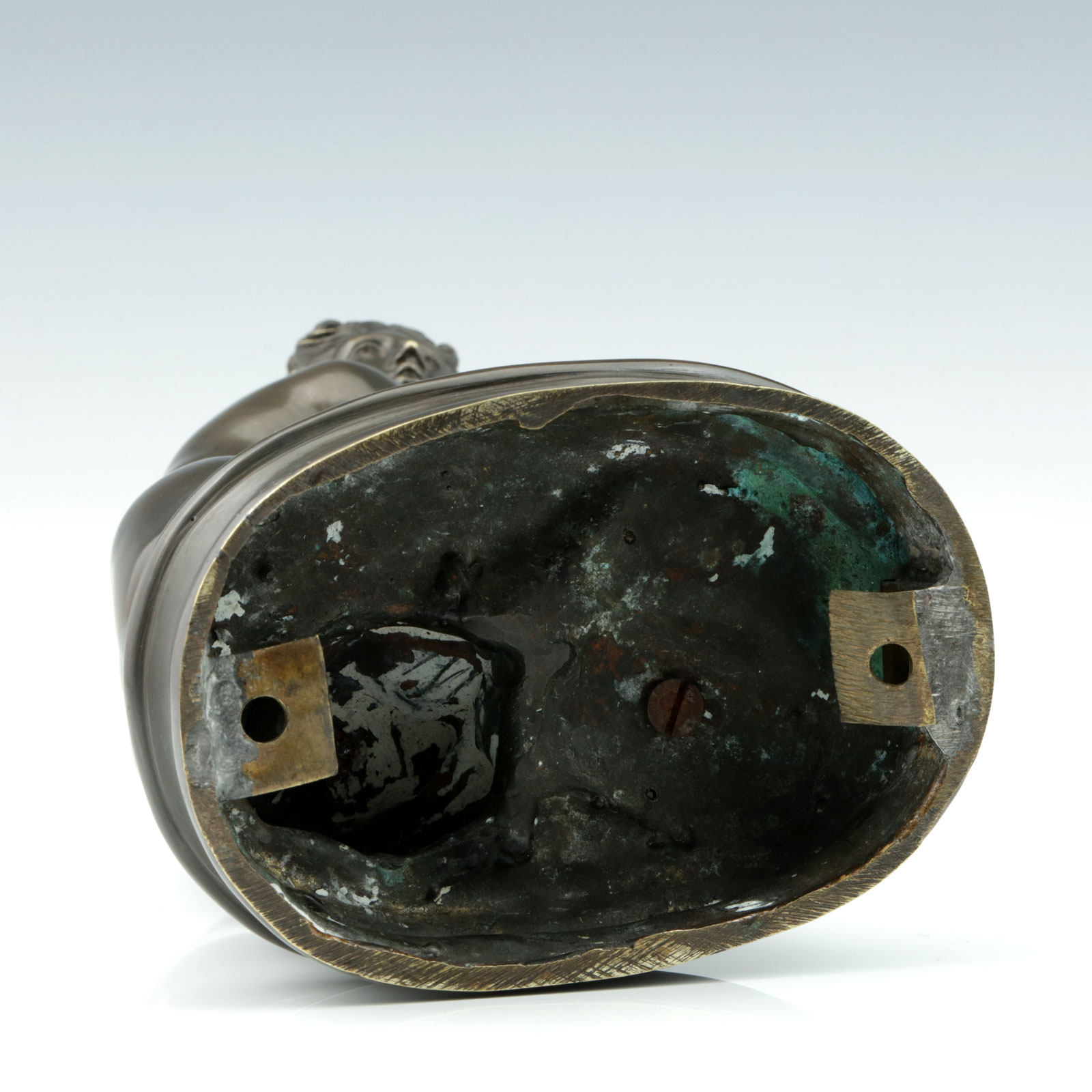
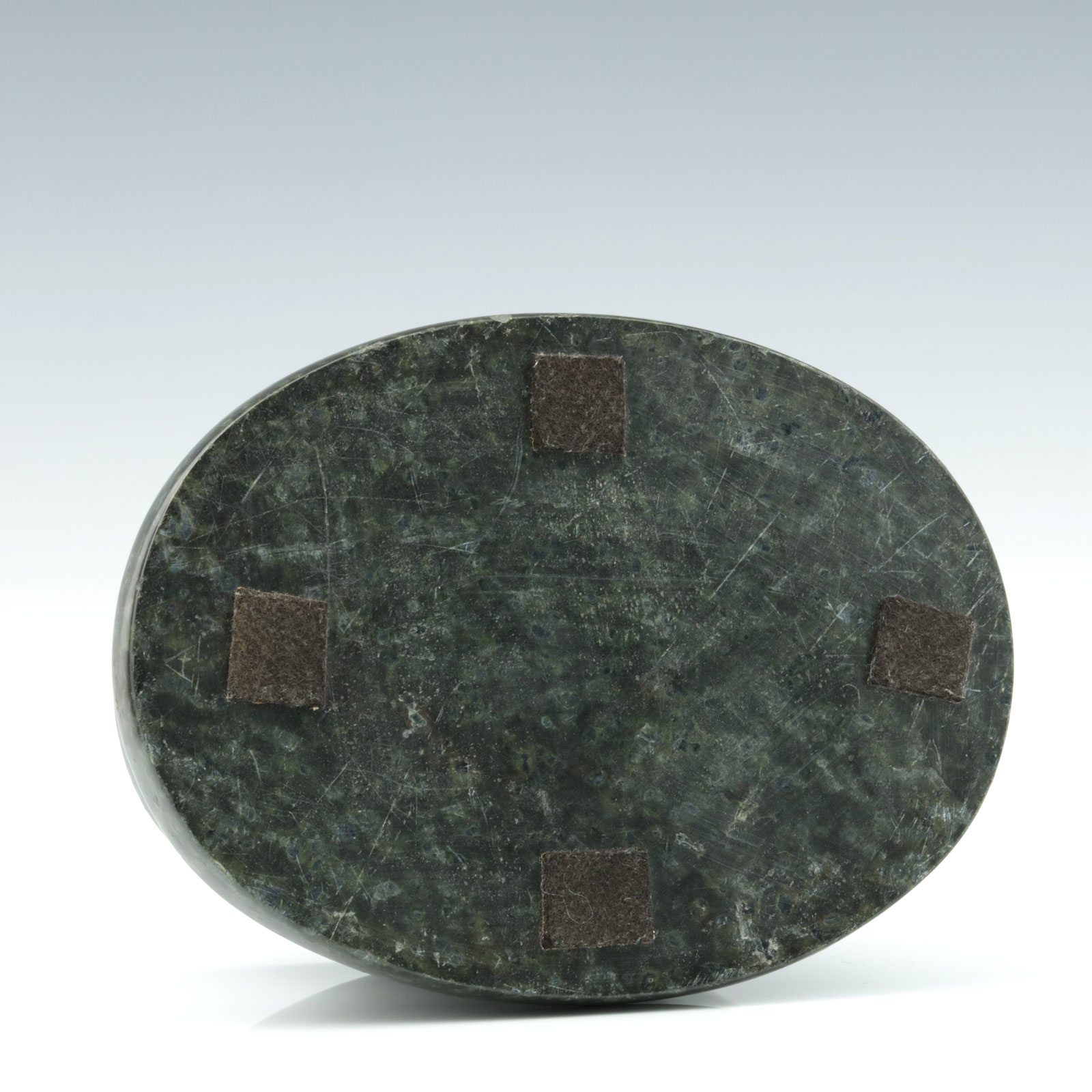
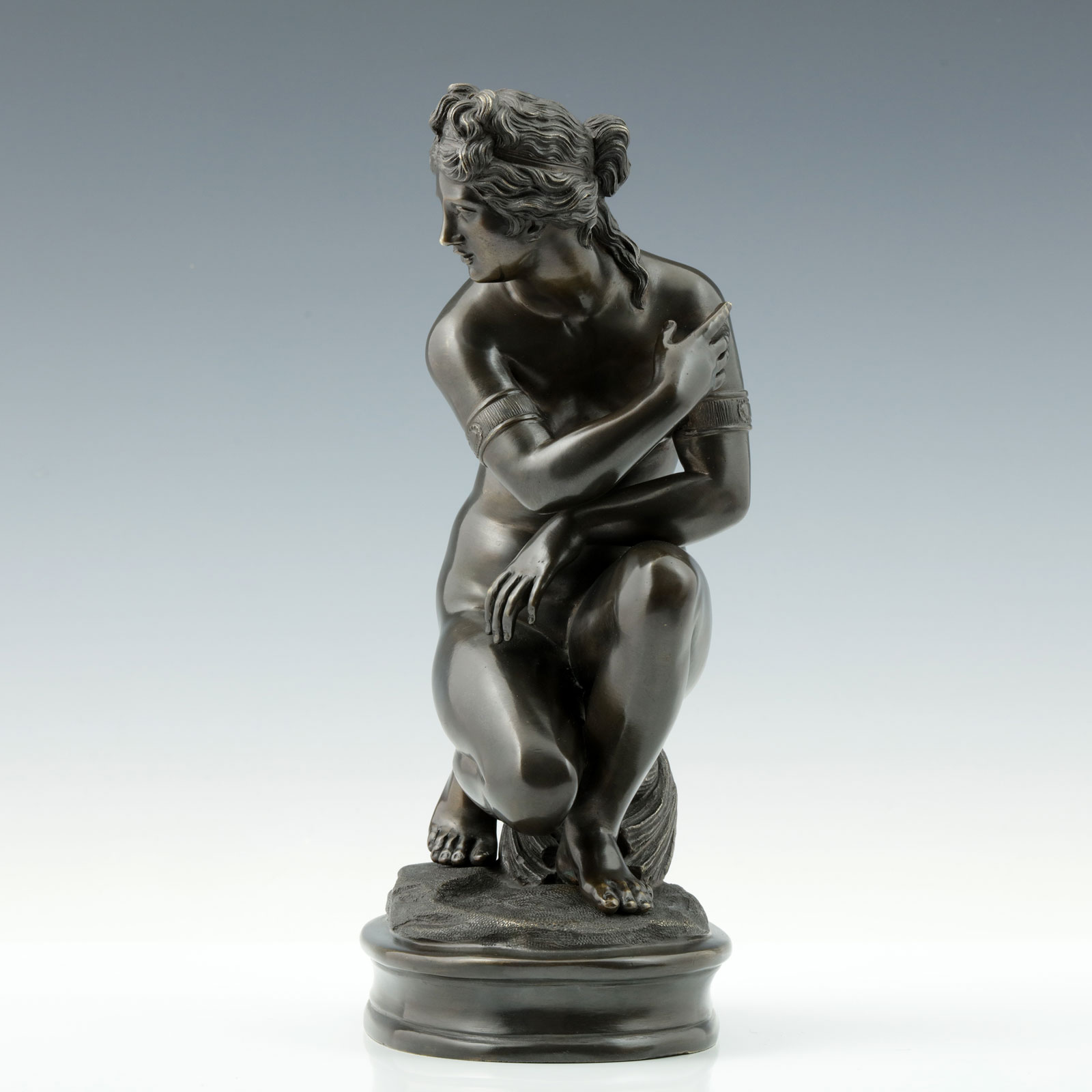
Knieende Venus mit Muschel nach Antoine Coysevox (1640-1720)
Exquisite, seltene Darstellung einer Venus, die auf einer Muschel ruht. Französische Schule, 19. Jahrhundert, sehr schöne und außerordentlich feine Ausführung mit filigranen Ziselierungen der Details wie das Haar und die Muschel sowie auf der Plinthe.
Bronze in dunkler, warmer Patinierung. Sehr guter, originaler Zustand. Trotz des Alters nur minimaler Abrieb der Patina - siehe dazu bitte die Fotos. Sehr schöner, gestufter ovaler Steinsockel, der vermutlich später ergänzt wurde.
Höhe (total): 35,5 cm Gewicht (total): 6,7 kg
Diese seltene Darstellung einer knieenden Venus (Vénus accroupie/ Crouching Venus) folgt der antiken Statue, die Ende des 16. Jahrhunderts bei Ausgrabungen in Italien entdeckt wurde.
1686 fertigte der Bildhauer Antoine Coysevox (1640-1720) eine Marmorkopie (ergänzt mit einer Schildkröte), die der Marquis de Louvois für das Schloss von Versailles in Auftrag gab. Beide Skulpturen befinden sich heute im Pariser Louvre (Inv.-Nr. MR 1826 und Inv.-Nr. MR 1853), eine weitere im Garten von Versailles. Die Londoner Wallace Collection besitzt ein weiteres Paar aus Bronze.
Lit.:
F. Haskell/ D. Penny: Taste and the Antique. The Lure of Classical Sculpture 1500 – 1900. London, 1981, S. 321.
A. Maral: Le Versailles de Louis XIV. Un palais pour la sculpture. Dijon, 2013, S. 242.
Crouching Venus with Shell after Antoine Coysevox (1640-1720).
Exquisite, rare depiction of a Venus resting on a shell. French school, 19th century, very beautiful and extraordinarily fine execution with filigree chasing of the details like the hair and the shell as well as on the plinth.
Bronze in dark, warm patina. Very good, original condition. Despite the age only minimal wear of the patina - please see the photos. Very beautiful stepped oval stone base, which was probably added later.
Height (total): 35,5 cm Weight (total): 6,7 kg
This rare representation of a kneeling Venus (Vénus accroupie/ Crouching Venus) follows the ancient statue discovered during excavations in Italy at the end of the 16th century.
In 1686, the sculptor Antoine Coysevox (1640-1720) made a marble copy (completed with a turtle) commissioned by the Marquis de Louvois for the Palace of Versailles. Both sculptures are now in the Louvre in Paris (inv. no. MR 1826 and inv. no. MR 1853), and another is in the garden at Versailles. The Wallace Collection in London has another pair in bronze.
Lit:
F. Haskell/ D. Penny: Taste and the Antique. The Lure of Classical Sculpture 1500 - 1900. London, 1981, p. 321.
A. Maral: Le Versailles de Louis XIV. Un palais pour la sculpture. Dijon, 2013, p. 242.
| Hersteller: | after the Antique |
| Material: | Bronze/ Marmor |
| Größe: | 35,5 cm |
| Gewicht: | 6,7 kg |
| Stempel: | ohne |
| Alter: | 19. Jahrhundert |
| Zustand: | exquisit |
| Land: | Frankreich |
I enjoy beautiful things and it is my greatest pleasure to find them, to lure them into their stories, to spend time with them and then set them free again. Add to that a passionate interest in exceptional and high crafted objects. You surely know the exciting feeling when you see or experience something special, when the heart bounces in excitement and the joy inside it spreads. That's what I wanted more in my life and that's how this shop came about. The foundation stone was a study of literature and art history as well as cultural communication. Curiosity, thirst for knowledge and a lot of collaboration with amazing personalities in the art and design world are how I got myself to where I am today. Through antiquities, history becomes tangible in the literal sense, one can perceive it sensually. They calmly defy the constant change of fashions and the taste of the times. They are like a bridge between past and present. For me personally they are an inexhaustible source of inspiration. Some objects give up puzzles, lock themselves up; others quite frankly reveal their past. They radiate joie de vivre, astonish or enchant us; make a collector's heart beat faster or become good friends and a meaningful place in your lives. They may be bulky or controversial, but they are never boring. I believe the stories, the hands, and the tradition behind the objects are equally as important as their aesthetic qualities. Antique objects can adds so much value to your life, and I personally cannot imagine a home without it. Each piece in my shop has been thoughtfully and personally chosen. What unites them is their craftsmanship, care and attention to detail. Enjoy them.

